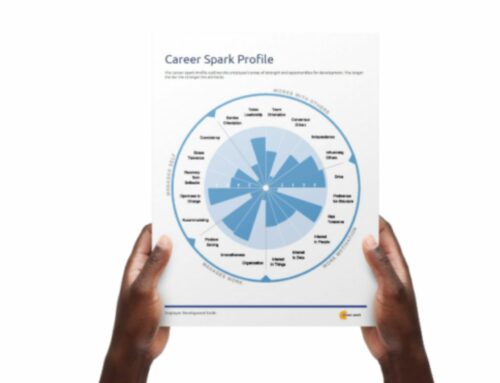I hated my career.

Jamie Schneiderman | June 12, 2019
I’ve frequently talked about how much I hated the first half of my career. I was disillusioned, frustrated and felt like there just wasn’t a place for me at work that would ever feel right.
And I wasn’t the only one. An alarming amount of my peers and friends were expressing the same feelings. Sound familiar? I began to wonder in my own case, why did it have to be that way? What if I understood exactly what I should have been doing from the beginning… or what if the companies I worked for had helped guide me to paths that would work for me long term? Would I still be at one of those companies?
“How different would my career have looked and how much time and frustration could have been avoided?”
I remember beginning an exciting new job position with a well-known organization early on in my career journey. There was a lot to love about the organization and, of course, lots to learn. However, as I navigated my new workplace I quickly discovered there were some things I didn’t love. Decision-making (as with many large organizations) was very slow and there always seemed to be a natural leaning toward previously proven programs, combined with little to no new innovation.
I’m naturally an entrepreneurial type (although I didn’t know it at the time) and I was always eager to find creative ways to tackle problems, and implement progressive strategies quickly. It didn’t take me long to figure that what I was naturally quite good at, was actually not going to fly with the new gig. I was surprised that much of what had made me successful in the past was all of a sudden not going to work for me.
What a buzz kill.
I continued to feel frustrated, but I did my best to try and adapt to a completely alien work-style, and I ended up (begrudgingly) sticking around for several years. A new promotion seemed to be coming my way and I hoped this would be the change I needed to start thriving at this company. As I considered my immediate next steps and future goals, I found there was no simple and meaningful access to information about what I should do next.
It felt like the formula for figuring out my
career journey was hidden in a black box.
Even when I connected with my leaders to share what I was interested in (I’ve never been shy to speak my mind) it was clear even they weren’t equipped to properly help their teams with succession planning and career path options. I longed for a leader who had the responsibility, bandwidth, or perhaps capabilities to effectively look at my strengths and weaknesses and say “hey, this is what Jamie would actually be great at and here’s where he could be even more of an asset to our organization in his next role here”. Instead, just lots of corporate HR speak, and no tangible next steps.
In the end, I was just assigned a role that was simply the next step up from where I had been. I went from Assistant Brand Manager to Brand Manager, no new responsibilities, limited potential for new learning and development opportunities, and no visible career path to what could be next for me – except for the obvious. I was bored, my skills were being underutilized and with a resignation letter in hand, I decided my career path at this company had hit a dead end.
After quitting, I’d often wondered what would have happened if my leaders had had the ability to be more transparent, intentional and flexible with career options for me and their other employees.
Just imagine the number of employees that were already trained on the business and rooted in the company culture that they could have retained – had they only been more willing and equipped to leverage and support their unique talents, skills and interests.
Fast forward to 2019 – clearly employee engagement stats and career-pathing initiatives haven’t changed much. Employee engagement according to a recent Gallup report is at an all-time low. Tenure and turnover have been moving in the wrong direction for the past 25 years and workers view companies as a quick pit stop now more than ever. Companies find it easy to blame the “Millennial mindset” but I think we can all agree that’s a total cop-out.
So what’s the elusive magic solution that can turn this all around? I would argue, it’s really the combination of two things:
1. Innovative, open-minded leaders invested in helping their employees succeed
2. The career pathing and employee engagement information and tools that will enable those leaders to successfully match their people to key needs across their business, while simultaneously engaging and empowering their employees with a clear view of the next steps in their career journey.
When companies have the foresight to invest just a tiny portion of the dollars they are losing each year from people inefficiencies, into effective career-pathing and employee engagement – it always results in a huge win for employees, for leaders and above all – the bottom line.
The movement is starting to happen but, as with many of us who are committed to the future of our workforce, it just can’t happen fast enough.
 Jamie Schneiderman
Jamie Schneiderman
Our Mission: Getting everyone in their right jobs to drive success at work.
Interested in chatting about how we can help you with career pathing and employee engagement? Send me a note via email or connect with me on LinkedIn













